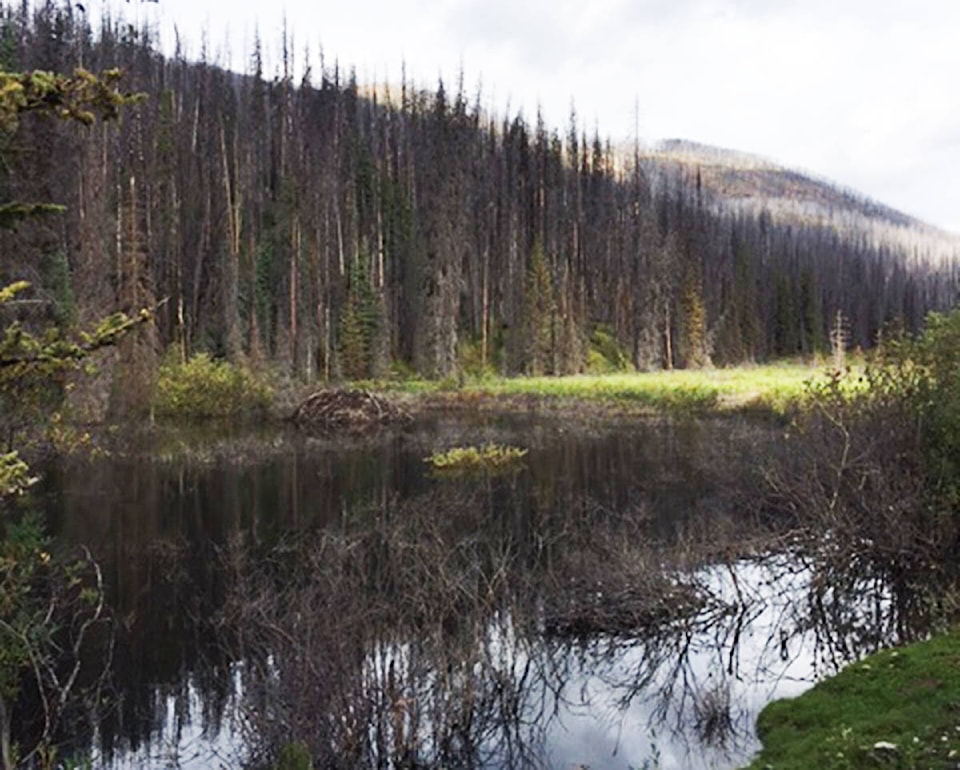“This fire is creating its own weather” – Blair, a firefighter in Clinton.
Something would convince me Blair was right.
Tuesday, Aug. 22. David Park owns the Clinton Coffee House. It had just reopened after being shut down for three weeks by the Elephant Hill fire that started in Ashcroft, July 6.
Before long, it forced the evacuation of Cache Creek, and Loon Lake. Hwy. 97 – closed to tourists – halted the supply of goods to Clinton before it, too, was evacuated. On Aug. 22, homes and ranches on Green Lake were in peril.
Blair sat next to a tuned guitar that Park keeps for anyone who wants to play. I ask about spot fires on the hills that morning.
“The local department handles fires inside village boundaries. For those outside, it’s the B.C. Wildfire Service.”
Wednesday, Aug. 23, breakfast at the Cordial Restaurant. It serves pancakes the size of dinner platters. I ask RCMP officers here if there are back roads I shouldn’t explore.
“Green Lake Road,” one says. “But, if you want to see what fire does, big fire on Jesmond Road nine years ago. Be safe.”
Jesmond Loop – about 65 kilometres – starts with a 16-kilometre drive past Kelly Lake to Jesmond. It’s gravel from here through Marble Canyon, named for its limestone mountains.
Becky Langlois, who lives in this area, remembers the last fire well. When a volunteer offered to evacuate her five horses to Chilliwack, she accepted.
“They came at 1 a.m. July 18th,” she told me.
There’s scorched trees for kilometers along Jesmond Rd., but coniferous saplings, meadows, and ponds with beaver lodges proclaim an enduring natural beauty.
At the “Circle h Ranch,” Daren has rustic cabins that hunters rent in the fall. He’s a retired tug boat captain who longed to escape city life. Not far down the road, I met Charlie. He keeps horses and for a fee will take you into the back country. I might add it to my bucket list.
Jesmond meets Big Bar Road near Kilometre 33. It swings back towards Hwy. 1 about 8 km north of Clinton. I was about half way there when the temperature dropped from 70 F to 33 F, and the sky opened for hail the size of dimes. It painted the ground white and stopped windshield wipers. I pulled over to watch a herd of cattle bolt for cover that wasn’t there.
After 10 minutes, the hail let up, only to return minutes later. It was followed by freezing rain, events that had me remembering the cop’s warning to “be safe,” and Blair’s comment that the Elephant Hill Fire makes its own weather.
Just as the warming of the oceans creates fiercer hurricanes year after year, extreme heat generated by Elephant Hill fire causes the air inside it to shoot violently upward.
You don’t have to be a meteorologist to know cooler air rushes in to fill the gap, creating strong winds in the process.
I eventually reconnected with Hwy. 1 at a high point they call the lookout. In the distance, towards the 70 Mile House and Green Lake, I watched a tall column of dirty smoke with a mushroom cap reminiscent of early photos of atomic bombs. They’ve been seeing those around here for a long time now.
Weather experts call them pyrocumulus clouds. They’re formed by huge columns of hot air coming off fires that can get large and heavy enough to drop moisture in the form of rain, or – I’m guessing – hail.
Donald Trump may call this false news, but Blair was right when he said the fire is creating its own weather.
We’re going to have to adapt our thinking about how we prepare for, and battle fires like Elephant Hill in years to come, because come they will.
Jack Emberly is a retired teacher, local author and environmentalist.
